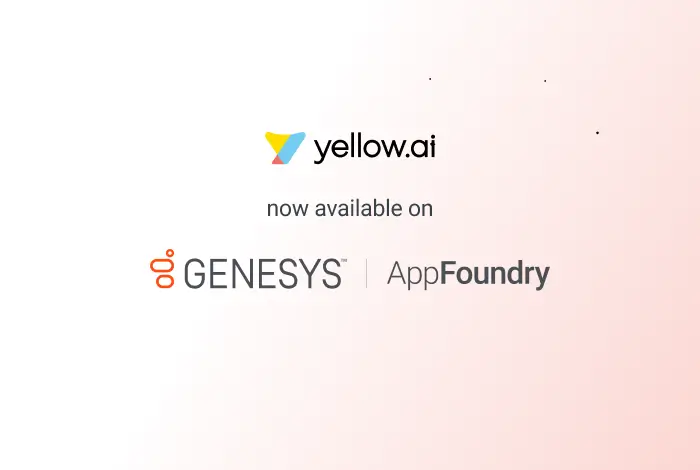Owing to increasing opportunities in the job market as well as a shift in employee perspective and work dynamics, employee attrition rates have been at an all-time high. This ‘great resignation’ seems to be a war-like situation for HR leaders, where they not only have to hire and seize new talent, but also retain it. In order to make sure your employees are satisfied and stay with you for long, you must follow these top 10 employee engagement trends in 2022.
What is employee engagement?
Employee engagement is a term coined by William Kahn in 1990 that describes, both qualitatively and quantitatively, the nature of the relationship between an organization and its employees. Employee engagement is not just about keeping the conversation going, it’s also about the emotional connection an employee feels towards their job and company.
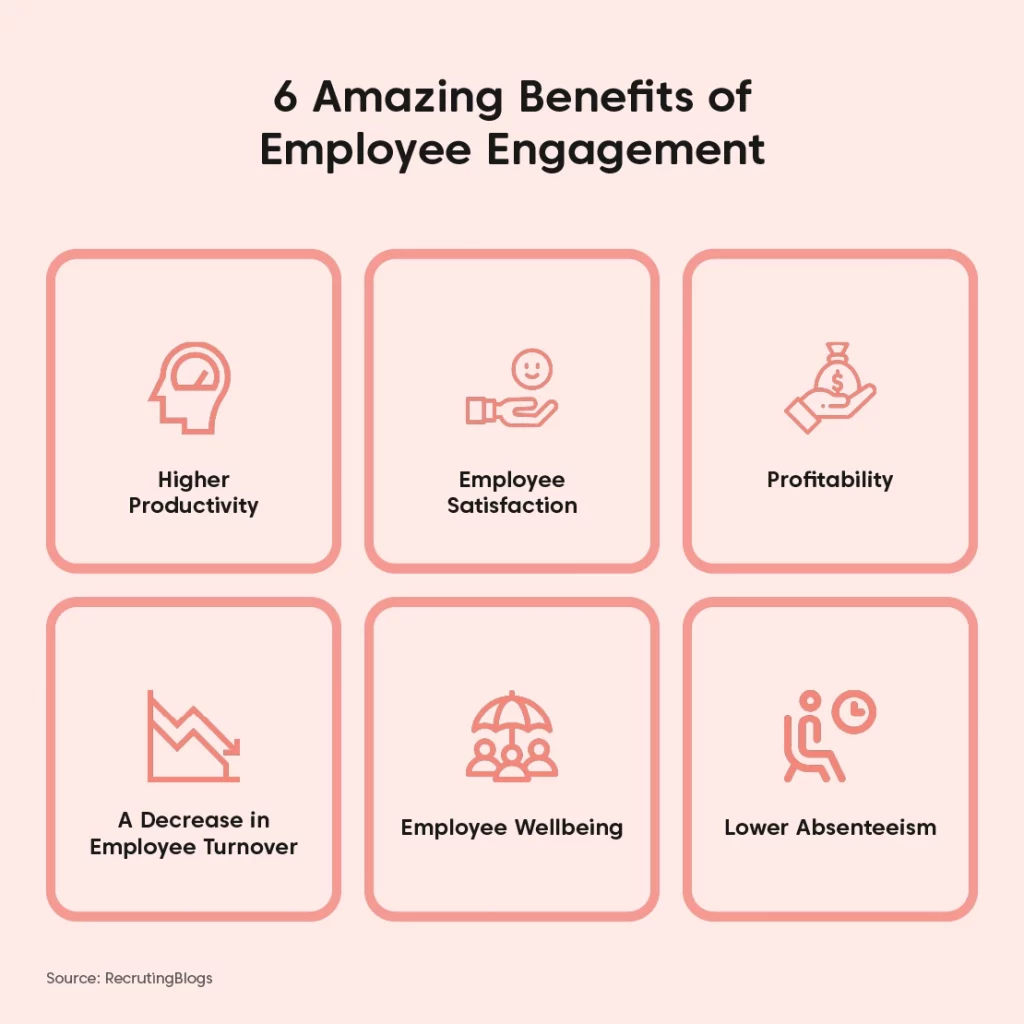
Impact of poor employee engagement
Besides increased employee turnover, poor employee engagement can also lead to the following disruptions at the workplace.
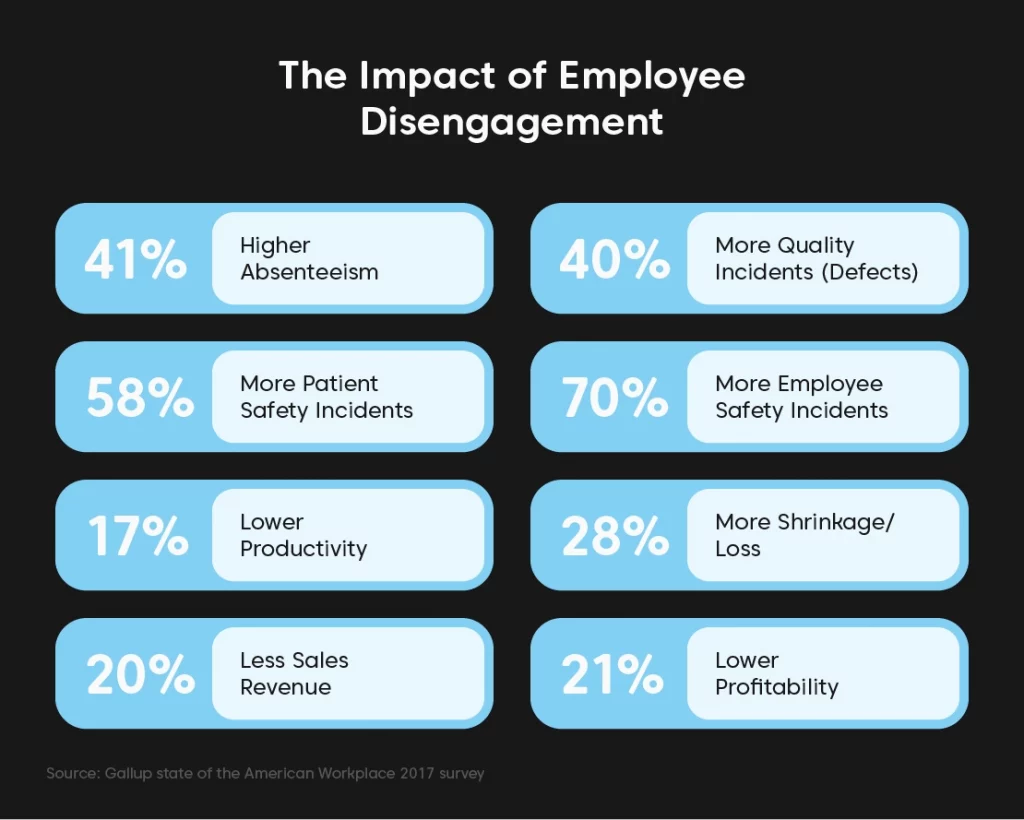
1. Disrupts workplace harmony
When employee morale is low, it can impact the overall workplace harmony. Low staff morale can affect a company’s bottom line, leading to diminishing profits, workplace conflicts and poor customer experience.
2. Increases costs and reduces returns
Disengaged employees are more likely to leave and attrition is a costly affair. Not only do they tend to be a drain on a company’s time and resources, but they might also be responsible for driving away other engaged employees.
3. Stagnates organizational growth
Research shows that disengaged employees are less likely to work hard, feel motivated, or meet expectations for their role, and they cause 60% more errors and defects in work performance which can adversely affect corporate performance and goal achievement.
4. Negatively impacts customer experiences
Disengaged and unhappy employees can lead to poor customer interactions and affect overall brand reputation. When the front-line employee is disengaged and uncaring, customers are more likely to spread negative word-of-mouth about the company.
Top employee engagement trends in 2022
1. Promoting teamwork with employee engagement apps
A survey found that 91% of employees want a closer relationship with their in-office coworkers, and 85% wish they could connect more with remote colleagues. This is where employee engagement apps can play a crucial role.
With the help of apps like Slack and Blink, you can share videos, announcements, and alerts with other employees on the platform – no matter where they are situated. These apps can also be integrated with various other apps like G Suite and project management dashboards that can help streamline overall communications and collaborations within an organization.
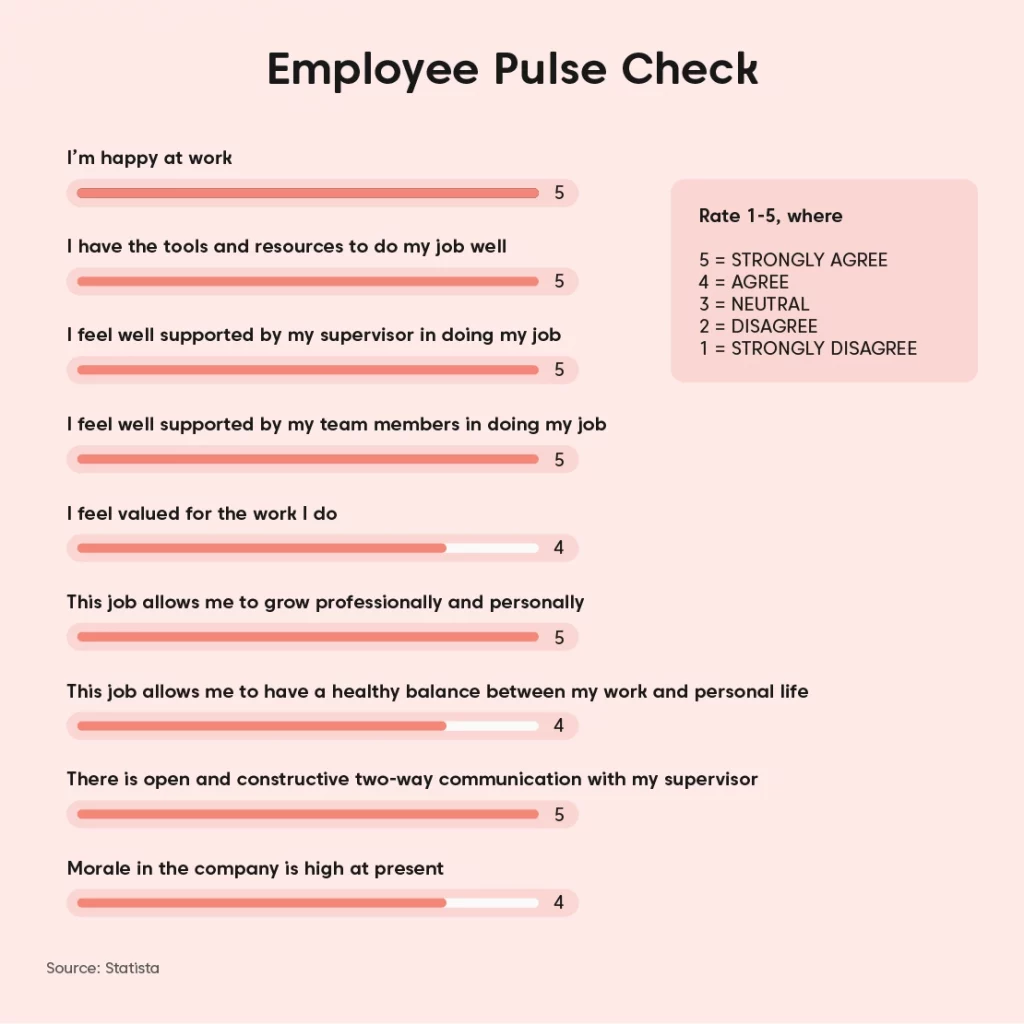
The apps can also be used to perform quick employee engagement check-ins, known as ‘pulse checks’. These are quick surveys that can help management figure out how their team is feeling about workloads, stress levels, and office culture.
2. Providing self-serve options with conversational AI
Gartner predicts that in 2022, 70% of white-collar workers will interact with conversational AI on a daily basis. With the help of conversational AI tools such as chatbots, you can stay available to answer various employee queries even after regular business hours.
Just like customers often prefer self-service options as they save their time and effort, similarly employees also tend to opt for self-service when they need instant resolution of their day-to-day queries. In addition to helping employees feel more independent, conversational AI tools also cut the time spent by the HR and IT team answering repetitive questions.
3. Keeping employee well-being at the forefront
Investing in employee wellbeing can increase retention, engagement, reduce sickness absence and lead to higher performance and productivity. To gain real benefit, employee wellbeing priorities must be integrated throughout an organization, embedded in its culture, leadership and people management.
Following are the strategies a company can implement to improve well-being at the workplace – offer work life balance, flexible working hours, health insurance, mental wellbeing apps, gym memberships, etc.
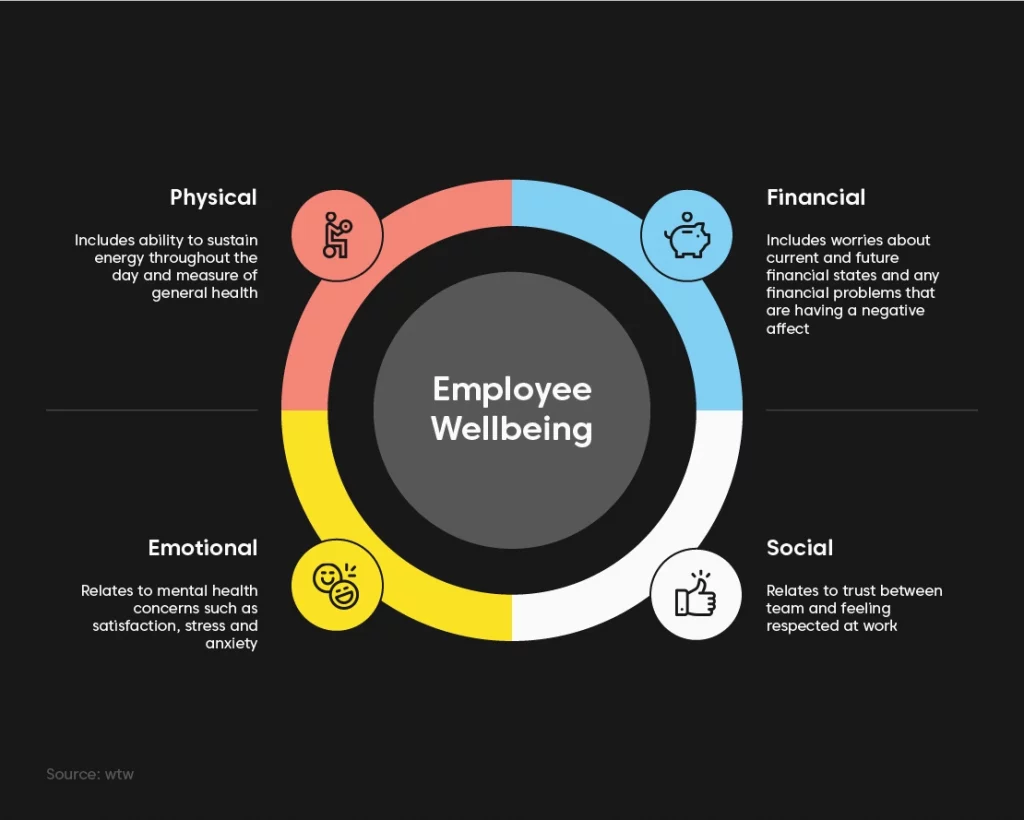
4. Enabling a multi-directional feedback system
Feedback systems should not be a one-way street- managers giving feedback to their employees. Implementing a multi-directional feedback will also be an opportunity for employees to voice their opinions. This can help the upper management improve the overall employee experience and make sure people are happy in their jobs.
Multidirectional feedback also enables lateral peer-to-peer feedback sharing. This can help employees understand how their individual actions affect their peers and not only just the management. Manually collecting feedback across an organization can be a tedious task which can be simplified with the help of conversational AI. Chatbots can send quick surveys to employees and gather feedback at scale.
5. Focusing on employee training and development
Investing in employees’ professional development helps you grow the talent you already have and reduce turnover, save on hiring costs, and maximize your profits. You can provide employees with free access to a professional course that can help them hone their skills. Alternatively, you can also organize workshops and seminars to help them excel at their jobs.
Chatbots can also be used to provide a truly personalized and engaging approach to learning and development. They can increase learner’s engagement and make sure employees take out time from their busy schedules to devote to learning.
Enterprise chatbots can periodically remind employees about their remaining assessments or study material, conduct a quiz every now and then to test their knowledge, and send them words of encouragement every day to help them complete their courses in a timely manner.
6. Implementing a peer-to-peer recognition program
A study found that the lack of recognition and engagement drives 44% of employees to switch jobs. This is why reward and recognition programs are important to ensure employee happiness. However, manager-to-employee recognition is a thing of the past. In order to promote teamwork and ensure unbiased R & Rs, you must implement a peer-to-peer recognition program where you recognize a co-worker for a job well done.
Team members work together and spend most of their time together. They have better interpersonal relationships than their manager. So, recognizing your team members is a more effective approach. Infact, The research found that peer-to-peer recognition is 35.7% more likely to positively impact financial results than manager-only recognition.
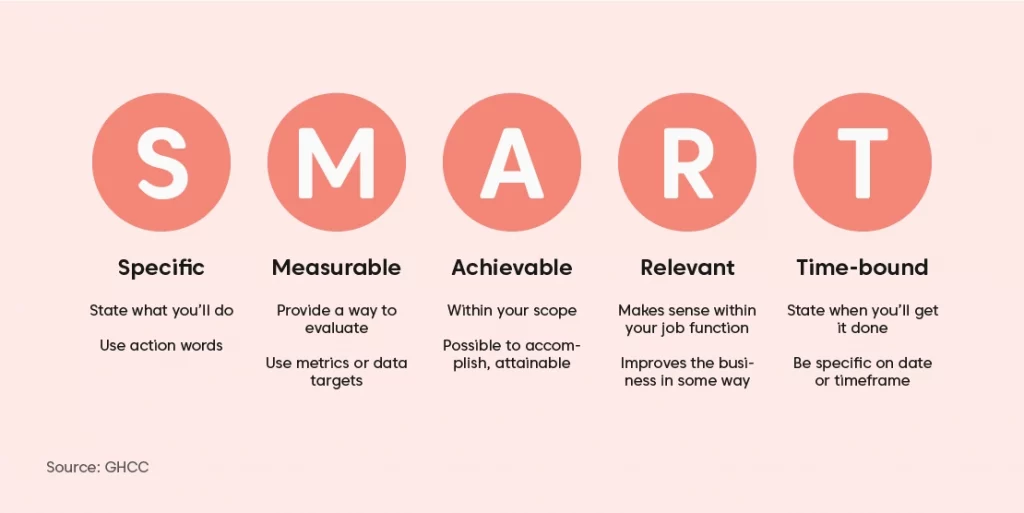
7. Setting SMART goals that get results
Goal Setting is important to keep employees motivated and promotes a sense of ownership/accountability. It’s important to set SMART goals – Specific, measurable, achievable, relevant, and time-bound.
SMART goals help you allocate your and your employees’ time to tasks that matter the most for success. On the other hand, having no specific goal to work on can lead to lower morale of the employee, and ultimately affects their productivity of work.
8. Fostering a transparent work environment
Workplace transparency means communicating openly and honestly with your team members to cultivate a culture where information can flow freely between employees and teams. Although transparency is often glossed over in vague terms, its benefits are tangible. It is proven to breed long-term success, create trust, help improve morale, lower job-related stress, while increasing employee happiness and boosting performance.
Some ways in which you can foster transparency at the workplace are – conduct stand-ups where everyone can know about the work being done, implement a project management dashboard where employees can check status of projects and break down silos with engagement apps and send weekly newsletters highlighting successes and failures, with the help of chatbots.
9. Building a robust onboarding strategy
A study found that 20% of new-hires leave an organization within 45 days of joining. Successful onboarding is the deciding factor of employee experience and not to mention, it sets them up for either success or failure.
An employee is likely to feel stressed and overwhelmed if the company doesn’t have a smooth onboarding process. On the other hand, if the complete responsibility of onboarding a new employee rests with the managers, it can put a significant strain on their workload. This is where an HR chatbot can help.
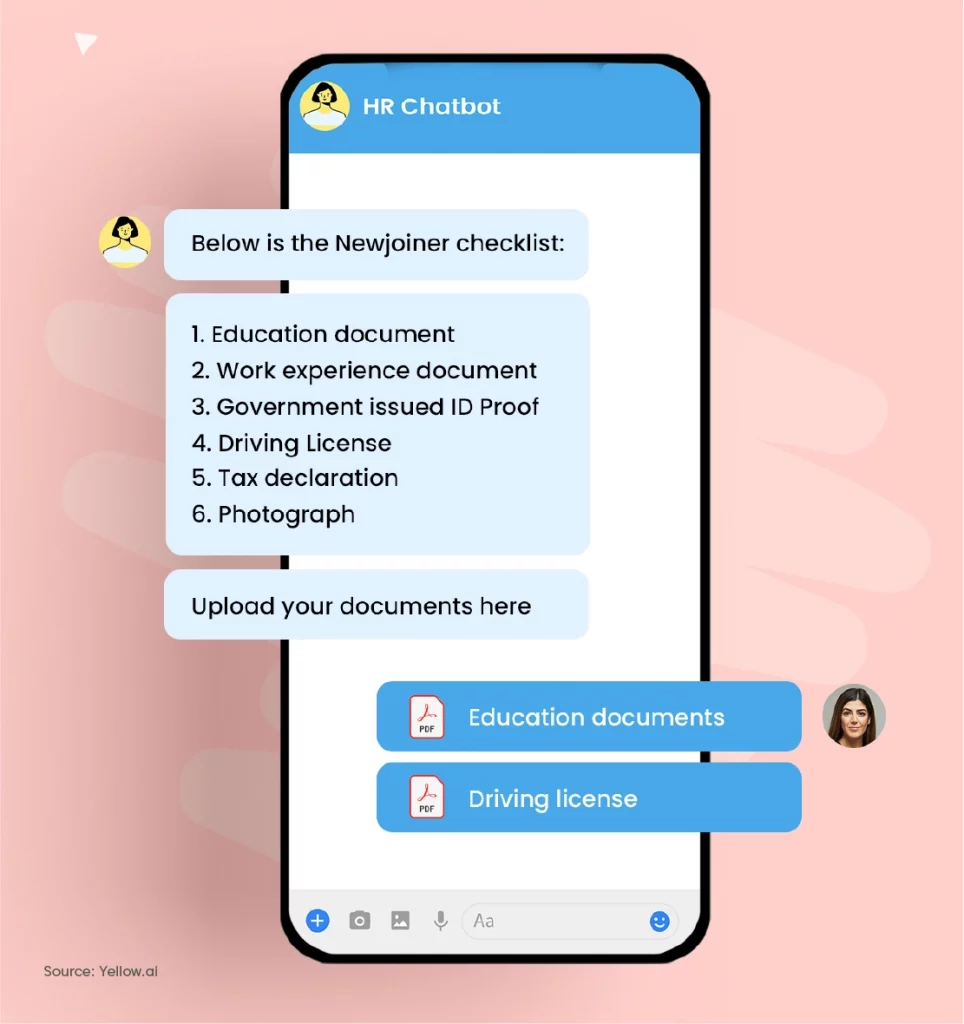
Most employees would agree that finding the right person for a particular task is the biggest challenge when you are new to an organization. Chatbots can help new hires by directing them to the right person. They can also walk hires through the onboarding paperwork and get them up to speed with the company’s history and policies, helping them feel more comfortable at the new job.
10. Offering fringe benefits
Fringe benefits are the indirect benefits given to employees over their salaries and wages. Employee satisfaction is directly related to the benefits they receive, in fact, the companies that rated highly on compensation and benefits experience 56% lower attrition.
Some examples of employee benefits are insurance plans, stock options, retirement plans, corporate discounts, paid vacations, parental leaves and wellness programs.
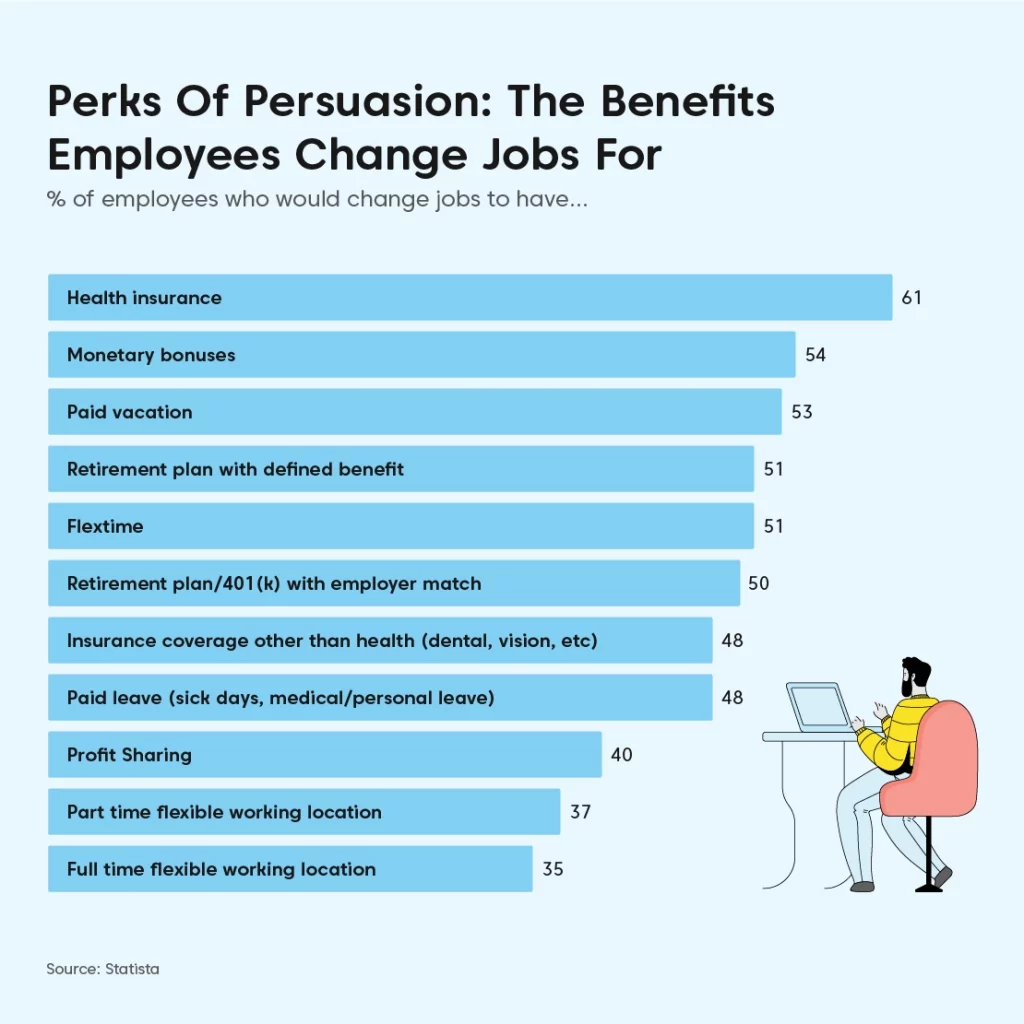
Bottom line
Employee engagement describes the level of enthusiasm and an emotional connection that an employee feels toward their job. It is critical to a company’s success, given that it has a direct impact on job satisfaction and employee morale. Engaged employees are more likely to stay productive and stick with you in the long run.
Request a demo and learn how our AI-powered total experience platform can help you boost employee engagement.

















